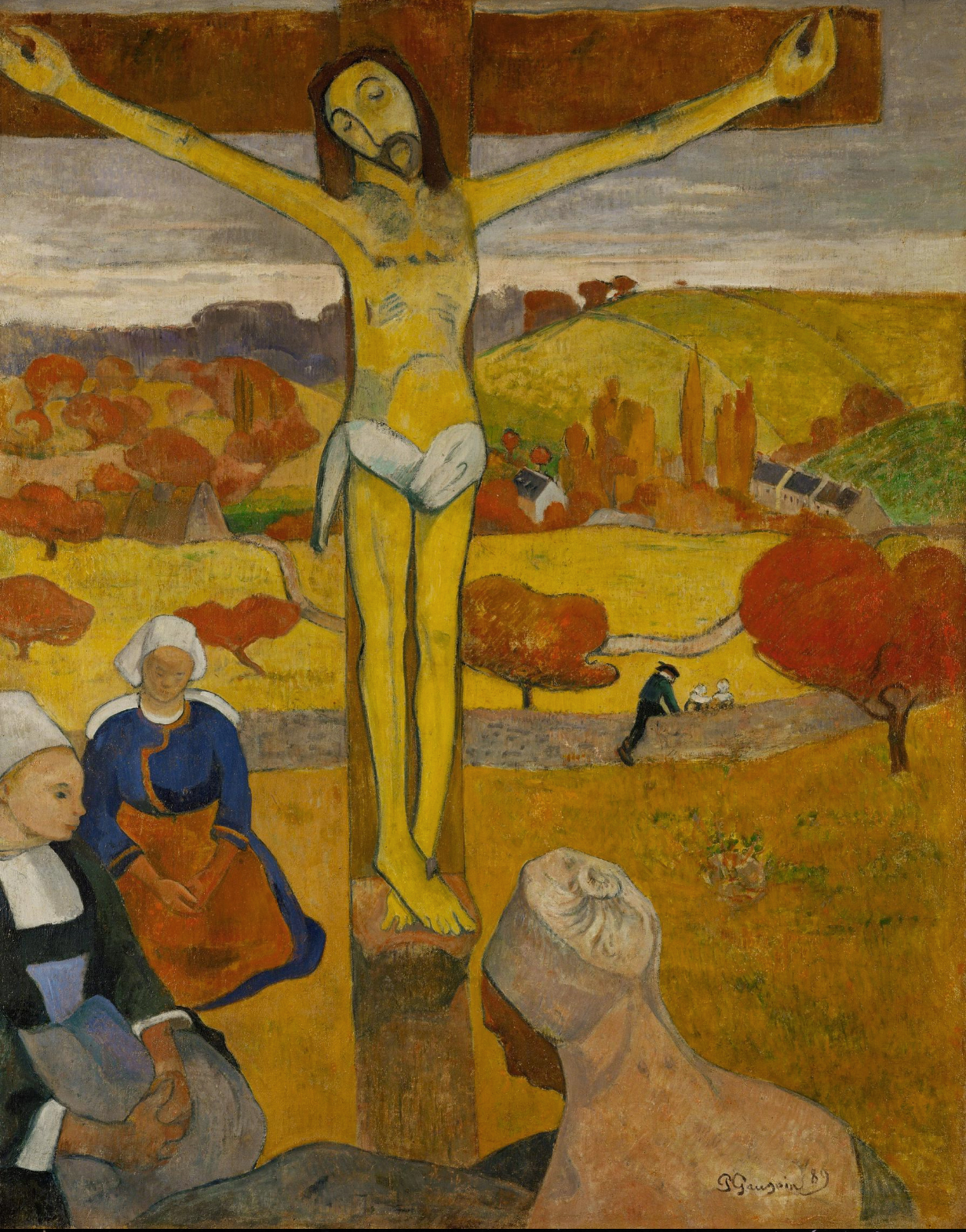Cloisonnism on:
[Wikipedia]
[Google]
[Amazon]
 Cloisonnism is a style of
Cloisonnism is a style of Review by William R. Everdell
of ''The First Moderns, Profiles in the Origin of Twentieth-Century Thought'' University of Chicago Press, 1997 retrieved March 27, 2010
File:Émile Bernard 1888 - Self-portrait with Gauguin portrait for Vincent.jpeg, Émile Bernard ''Self-portrait with portrait of Gauguin, dedicated to Vincent van Gogh.'' Bernard, 1888
File:Émile Bernard 1888-08 - Breton Women in the Meadow (Le Pardon de Pont-Aven).jpg, Émile Bernard, ''Breton Women in the Meadow'', August 1888.
File:Paul Gauguin 137.jpg,
at ArtFacts
{{Western art movements Post-Impressionism Artistic techniques Modern art
 Cloisonnism is a style of
Cloisonnism is a style of post-Impressionist
Post-Impressionism (also spelled Postimpressionism) was a predominantly French art movement that developed roughly between 1886 and 1905, from the last Impressionist exhibition to the birth of Fauvism. Post-Impressionism emerged as a reaction ag ...
painting with bold and flat forms separated by dark contours. The term was coined by critic Édouard Dujardin on the occasion of the Salon des Indépendants
Salon may refer to:
Common meanings
* Beauty salon, a venue for cosmetic treatments
* French term for a drawing room, an architectural space in a home
* Salon (gathering), a meeting for learning or enjoyment
Arts and entertainment
* Salon (Pa ...
, in March 1888. Artists Émile Bernard, Louis Anquetin, Paul Gauguin
Eugène Henri Paul Gauguin (, ; ; 7 June 1848 – 8 May 1903) was a French Post-Impressionist artist. Unappreciated until after his death, Gauguin is now recognized for his experimental use of colour and Synthetist style that were distinct fr ...
, Paul Sérusier
Paul Sérusier (9 November 1864 – 7 October 1927) was a French painter who was a pioneer of abstract art and an inspiration for the avant-garde Nabis movement, Synthetism and Cloisonnism.
Education
Sérusier was born in Paris. He studied ...
, and others started painting in this style in the late 19th century. The name evokes the technique of '' cloisonné'', where wires (''cloisons'' or "compartments") are soldered to the body of the piece, filled with powdered glass, and then fired. Many of the same painters also described their works as Synthetism, a closely related movement.
In '' The Yellow Christ'' (1889), often cited as a quintessential cloisonnist work, Gauguin reduced the image to areas of single colors separated by heavy black outlines. In such works he paid little attention to classical perspective and eliminated subtle gradations of color—two of the most characteristic principles of post-Renaissance
The Renaissance ( , ) , from , with the same meanings. is a period in European history marking the transition from the Middle Ages to modernity and covering the 15th and 16th centuries, characterized by an effort to revive and surpass ide ...
painting.
The cloisonnist separation of colors reflects an appreciation for discontinuity that is characteristic of Modernism
Modernism is both a philosophical and arts movement that arose from broad transformations in Western society during the late 19th and early 20th centuries. The movement reflected a desire for the creation of new forms of art, philosophy, an ...
.of ''The First Moderns, Profiles in the Origin of Twentieth-Century Thought'' University of Chicago Press, 1997 retrieved March 27, 2010
Gallery
Paul Gauguin
Eugène Henri Paul Gauguin (, ; ; 7 June 1848 – 8 May 1903) was a French Post-Impressionist artist. Unappreciated until after his death, Gauguin is now recognized for his experimental use of colour and Synthetist style that were distinct fr ...
, ''Vision after the Sermon
''Vision after the Sermon (Jacob Wrestling with the Angel)'' is an oil painting by French artist Paul Gauguin, completed in 1888. It is now in the Scottish National Gallery, Edinburgh. It depicts a scene from the Bible in which Jacob wrestles a ...
,'' 1888.
Image:Louis Anquetin.jpg, Louis Anquetin, ''Reading Woman,'' 1890
Image:Serusier - the talisman.JPG, Paul Sérusier
Paul Sérusier (9 November 1864 – 7 October 1927) was a French painter who was a pioneer of abstract art and an inspiration for the avant-garde Nabis movement, Synthetism and Cloisonnism.
Education
Sérusier was born in Paris. He studied ...
, ''The Talisman/Le Talisman,'' 1888, Musée d'Orsay
The Musée d'Orsay ( , , ) ( en, Orsay Museum) is a museum in Paris, France, on the Left Bank of the Seine. It is housed in the former Gare d'Orsay, a Beaux-Arts railway station built between 1898 and 1900. The museum holds mainly French a ...
, Paris
Paris () is the capital and most populous city of France, with an estimated population of 2,165,423 residents in 2019 in an area of more than 105 km² (41 sq mi), making it the 30th most densely populated city in the world in 2020. Si ...
Resources
Notes
See also
* Émile Bernard chronology * The Volpini Exhibition, 1889External links
at ArtFacts
{{Western art movements Post-Impressionism Artistic techniques Modern art